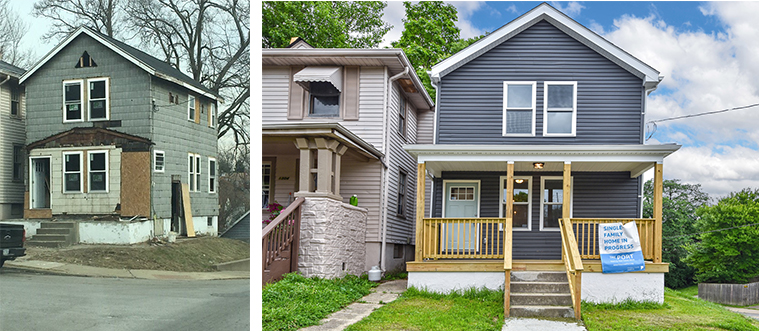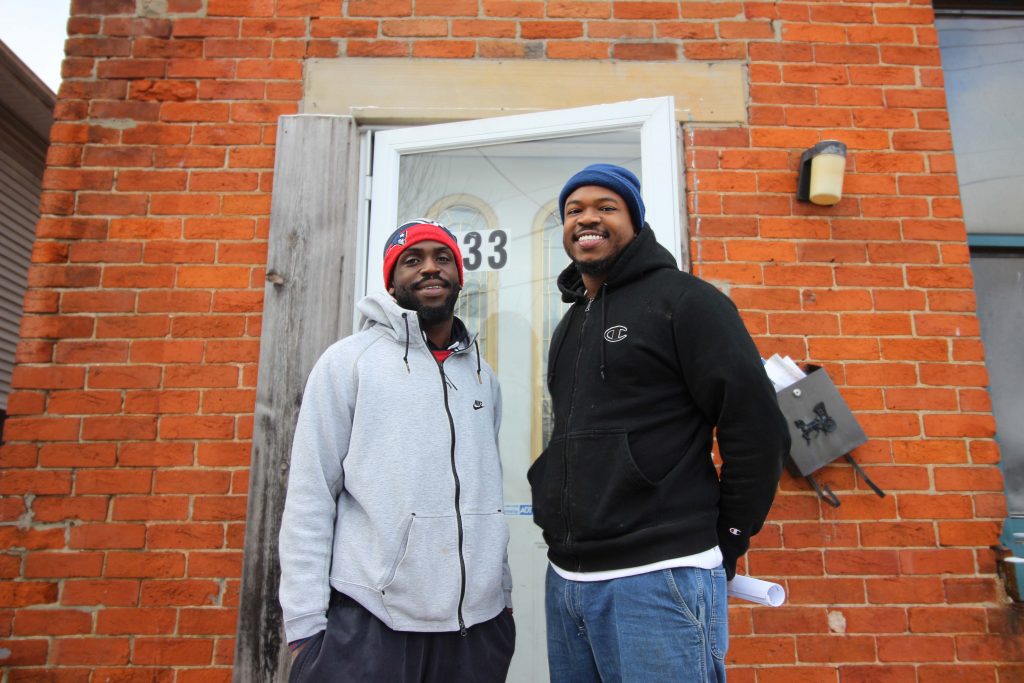Perspectives: How I learned about a french drain and came to love a property survey
I began working at The Port in May 2018 after completing a Masters in Community Planning at the University of Cincinnati. The past year has been an exercise in taking the theory discussed in classes and studio time into practice. Working in the neighborhoods of Cincinnati, each with their different personalities and goals for their communities makes for a fun puzzle when it comes to how to best return properties to their highest and best use. Cincinnati is an exciting city to work in the fields of real estate development and urban planning. The national conversation around affordability, community development, and equity is playing out on a local level throughout the city.
Throughout the last year, I’ve had the privilege to work on some interesting and complex projects that are happening in Cincinnati and throughout Hamilton County.
In reflecting on the last year, the following are a few of my learnings that have made me a better Urban Planner, Community Developer and Neighborhood stakeholder.
REACH (Rehab Across Cincinnati and Hamilton County) Housing

1302 Beech Ave at beginning of construction and near the end of construction. This home is slated to be listed on MLS late-July.
At The Port, I’m on our REACH program team, working to scale new market comps in our focus neighborhoods, many of which have experienced significant disinvestment. This model of community development was tested in the neighborhood of Evanston where, before REACH was invited into the neighborhood, there had not been a market home sale for nearly 10 years. To date, REACH Evanston has rehabbed and sold nearly 30 homes helping establish comps and bring equity to the neighborhood’s homeowners.
Last year, The Port began laying the groundwork for bringing REACH to Price Hill. Since I started, through REACH, we have begun the rehabilitation of 10 homes with the goal of having them for sale this summer. This year has been a learning experience for someone with planning experience and little construction management experience. I quickly learned the difference between a sump-pump and a french drain!
The urban planner in me appreciates the effort to increase density, create safe streets and establishing setback standards to make sure homes interact with the street in a comforting way. The residential developer executes these ideas and helps them come into fruition. In some cases, these are easy ideas to deploy while others require some creativity on the ground to make sure they are achieved.
Lot Consolidation and Neighborhood Change
**Fair Warning: The following has the potential to be very boring.** Those of us who work in neighborhoods are interested in how the neighborhoods formed and how development impacts them. Neighborhoods are reactive and reflect how the residents use them and interact with them. There is a legal part of this change that I was intimately aware of prior to my work at The Port. Lot splitting and consolidation are the legal mechanism through which neighborhoods can evolve. When a large piece of land is separated out to make residential lots, the process requires a survey of the property, legal description and submission to the county to be recorded. For those of us who do the work of neighborhood development, this is an important part of how neighborhoods change.
Why is this important? Perhaps you are a homeowner next to a vacant lot. Maybe it is in the Landbank inventory and you would like to extend your property to include that vacant lot. You may want to add a garage, or extend your driveway, or add that pergola to achieve your Tuscan dreams. To do that, you will need purchase that neighboring lot, and follow the steps above. This is how neighborhoods can change to reflect the residents that occupy it.
Property Dispositions

Jullian Smith (on the right) acquired 2233 Symmes, a more than 115 year old home, from the Landbank. He is rehabbing the home in Walnut Hills and plans to live there.
This year, in the most public facing part of my work at The Port, I have brought 20 applications for Landbank properties to our internal committee for approval. The committee that approves property dispositions is made up of our senior leadership who assess the Landbank property applications brought by myself and others in the organization. The applications are vetted by the local community development corporation (CDC) prior to review by the committee. Each application is evaluated based on the community’s goals, and the purchaser’s capacity and timelines. This committee meets twice a month and sees properties from Sedamsville to Kennedy Heights and throughout Hamilton County. Applications for Landbank properties vary for end uses ranging from side yards and vegetable gardens to the rehab of single-family homes. The Landbank’s goal is to return previously underperforming land (approximately 11 acres) and buildings to useable space for residents, the community and the county.
Looking Forward
It’s been a full year, with a variety of projects that challenge the theory learned from my Master’s program and build upon the work I have done and been a part of this year. I am excited to see how I can support The Port’s role through my daily work on the neighborhood team and how I can continue to implement The Port’s tools to benefit residents and neighborhoods in Hamilton County. Hopefully I’ll see you out there!
Matt Johnson is Real Estate Development Associate at The Port.